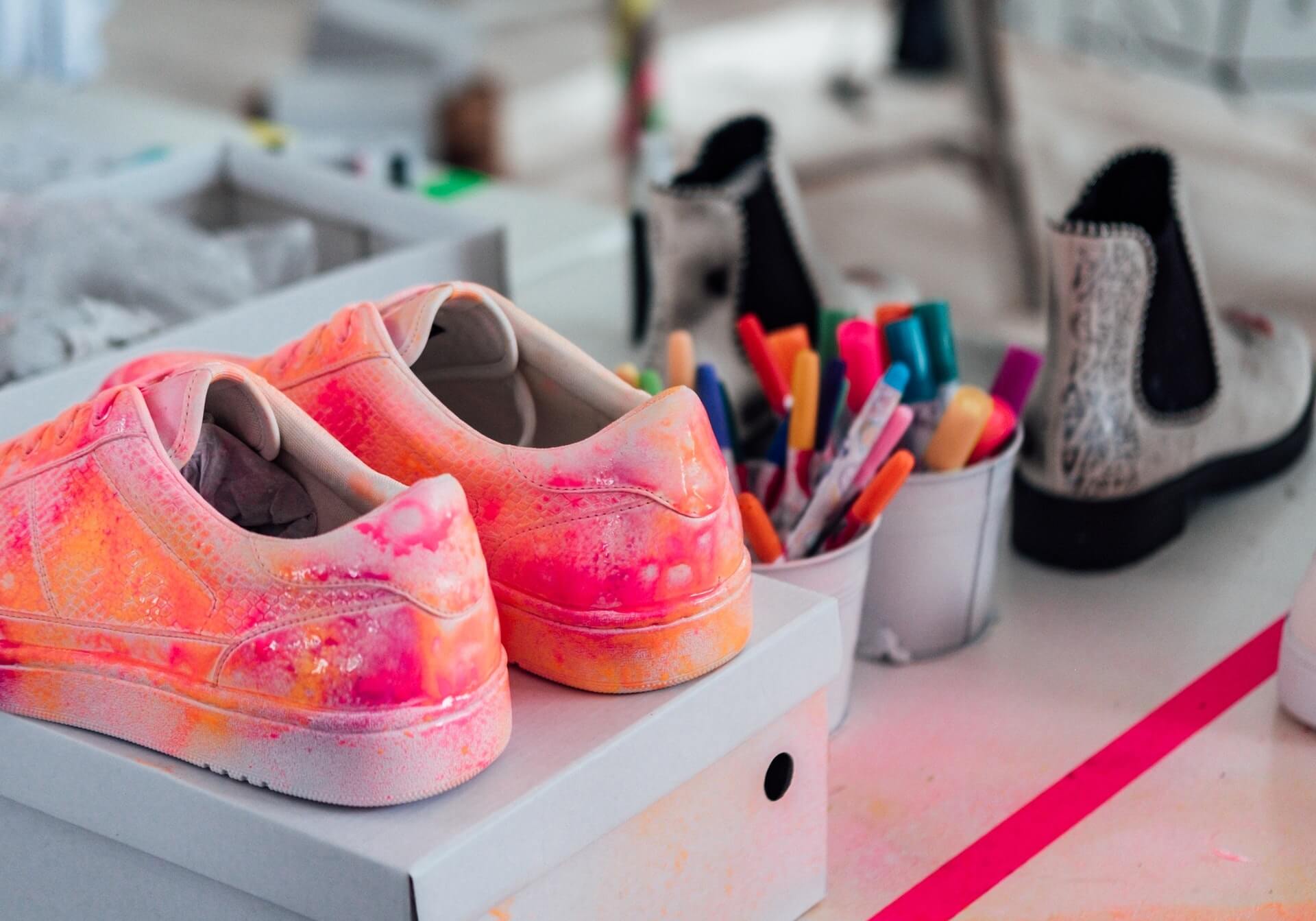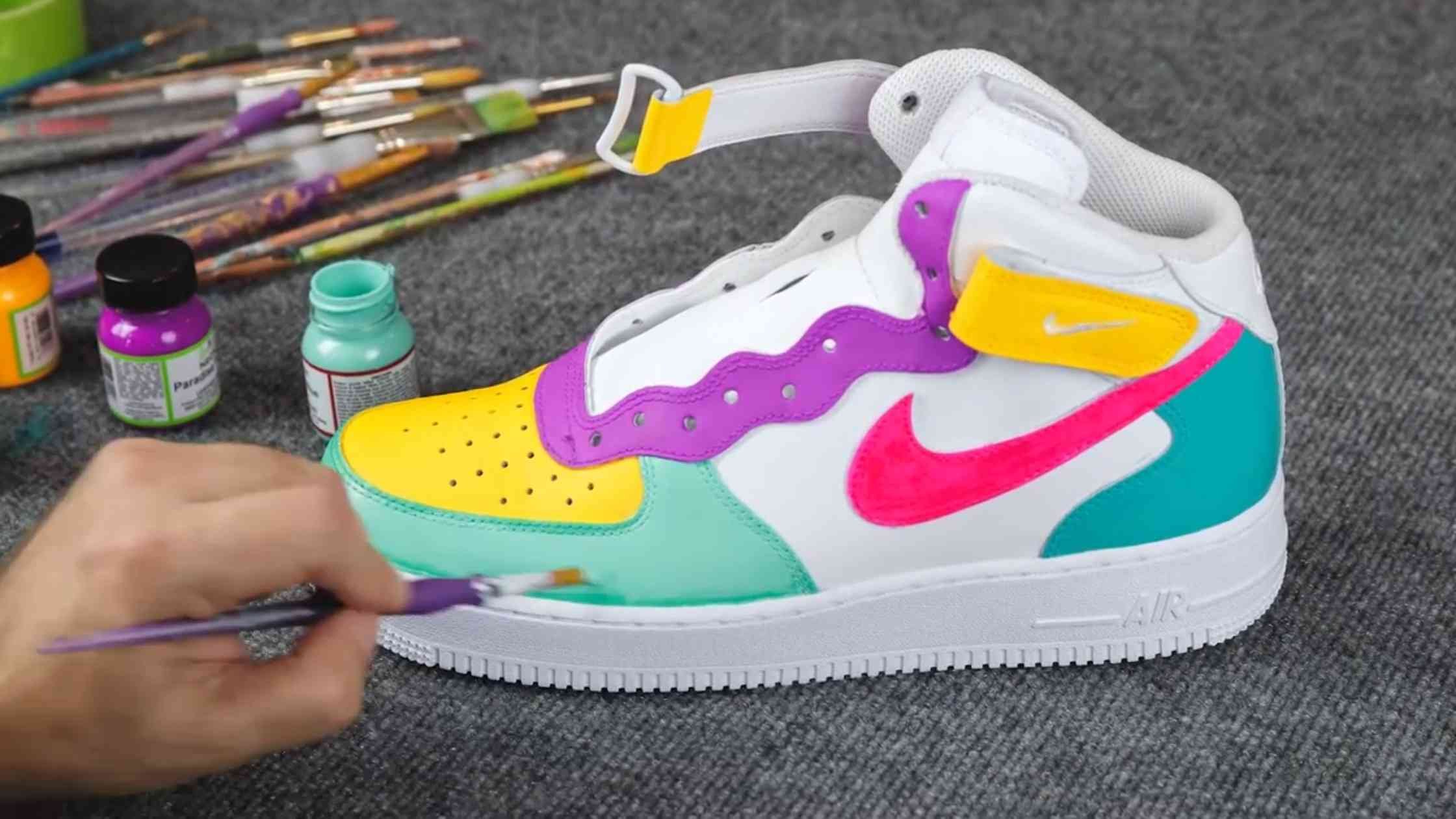Are you looking to breathe new life into your favorite pair of shoes? Perhaps you want to express your personal style or simply cover up some scuffs. Whatever your reason, knowing what paint to use on shoes is crucial for achieving the best results. In this comprehensive guide, we’ll cover everything from the types of paint suitable for different materials, to application tips, and even some real-world experiences. Let’s dive in!
Understanding Shoe Materials
Before we get into paint selection, it’s important to understand the different materials shoes are made of. The most common materials include leather, suede, canvas, and synthetic textiles. Each material requires a different type of paint for optimal adhesion and durability.
Leather Shoes
Leather is a popular choice for footwear due to its durability and versatility. When painting leather shoes, it’s essential to use paint specifically designed for leather to ensure that it adheres properly and remains flexible. Look for acrylic leather paint, which is both vibrant and long-lasting. Brands like Angelus offer a variety of colors and finishes perfect for customizing leather shoes.
Real-World Example:
Take John, for instance. He had an old pair of black leather sneakers that had seen better days. He decided to try his hand at painting them with Angelus leather paint. After preparing the surface by cleaning and lightly sanding, he applied the paint with a soft brush. The result? A fresh, stylish pair of shoes that looked brand new!
Canvas Shoes
Canvas is another widely used material, especially for casual shoes. For canvas footwear, fabric paint or acrylic paint is a suitable option. Fabric paints are particularly great as they are designed to be flexible and are less prone to cracking.

Case Study:
Sarah, an art student, transformed her plain white canvas sneakers into a colorful masterpiece. After choosing a set of fabric paints, she sketched her design and painted over it layer by layer. The finished product was a stunning representation of her artistic flair!
Choosing the Right Paint
Selecting the right paint is crucial. Not only does the type of paint matter, but so does the color, finish, and even the brand. Here’s a breakdown of popular paint options for different shoe materials.

Comparison Table of Shoe Paints
| Material | Recommended Paint | Finish | Drying Time | Pros | Cons |
|---|---|---|---|---|---|
| Leather | Angelus Leather Paint | Matte/Satin/Gloss | 1-2 hours | Durable, Flexible | Can be costly |
| Canvas | Tulip Fabric Paint | Matte | 1 hour | Flexible, Non-toxic | Limited color options |
| Suede | Spray Dye or Fabric Paint | Matte | 2-3 hours | Even coverage, Easy to apply | May damage the texture |
| Synthetic | Acrylic Paint | Gloss or Matte | 1-2 hours | Versatile, Wide color range | Can crack over time |
Application Tips for Painting Shoes
Proper application can make a world of difference in the final look of your painted shoes. Here are some essential tips to keep in mind:

Prep Your Shoes
Always start with a clean surface. Wipe your shoes down with soap and water to remove dirt, oils, and residues. For leather, consider lightly sanding the surface to create a better grip for the paint.
Use Proper Tools
The tools you use can significantly impact your results. For detailed designs, use fine-tipped brushes; for larger areas, consider a sponge or a spray applicator. Don’t forget painter’s tape to protect any areas you don’t want to paint!

Seal Your Work
Once your paint is dry, sealing it can enhance durability. Use a clear acrylic sealer or a suitable shoe protector spray to keep your design intact.
Product Highlights: Best Paints for Shoes
1. Angelus Leather Paint
This is a top choice for leather shoes. With a vast color selection and various finishes, it’s known for its durability and flexibility. Users praise its adherence to the leather and the vibrant results. However, it can be on the pricier side.

2. Tulip Fabric Paint
Ideal for canvas shoes, Tulip’s fabric paints are non-toxic and flexible, making them perfect for artists of all ages. They offer a decent range of color options, but some users have found them lacking in pigment intensity for bolder designs.
Pros and Cons of Painting Your Shoes
Pros:
- Personalization: Customizing your footwear can reflect your unique style.
- Cost-Effective: Reviving old shoes can save you money compared to buying new ones.
- Creative Outlet: Painting shoes can be a fun and rewarding artistic hobby.

Cons:
- Durability: Painted shoes may not withstand all weather conditions unless properly sealed.
- Time-Consuming: Proper preparation and drying times require patience.
- Skill Level: Achieving professional-looking results may require practice and technique.
Frequently Asked Questions (FAQs)
1. Can I use regular acrylic paint on shoes?
While you can use regular acrylic paint, it may not adhere as well as paints specifically designed for fabric or leather, and it might crack over time.

2. How do I prepare shoes for painting?
Clean the shoes thoroughly, remove dirt and grime, and lightly sand the surface if they are leather. This will help the paint adhere better.
3. Is it necessary to seal the paint?
Yes, sealing your painted shoes can enhance durability and protect them from water and scuffing, ensuring your design lasts longer.

4. Can painted shoes be washed?
Avoid machine washing painted shoes. Instead, spot clean them gently with a damp cloth to preserve the paint.
5. How long does the paint take to dry?
Drying times can vary by the type of paint used, but typically, it ranges from one to three hours. Be sure to let them cure completely before wearing.
6. Can I paint over existing designs or patterns?
Yes, but make sure the previous paint is compatible or fully dried. Some painters opt to prime over old designs to ensure better adhesion.
7. How can I fix mistakes while painting?
You can use a mild acetone to wipe off paint while it’s still wet. If it’s dried, careful sanding may remove layers without damaging the shoe.
8. How do I choose colors when painting shoes?
Consider your personal style and the outfit you plan to wear. It’s often a good idea to opt for colors that complement each other for a cohesive look.
9. Are there any safety precautions when painting shoes?
Always paint in a well-ventilated area, wear gloves, and protect your workspace to avoid staining surfaces. If using spray paint, consider wearing a mask to avoid inhaling fumes.
10. Can I use spray paint on shoes?
Yes, spray paint can be used, especially on canvas or synthetic materials. However, make sure to use a paint designed for fabric to ensure good adhesion.
Conclusion
Painting shoes opens a world of possibilities for self-expression and creativity. By choosing the right paint for your shoe’s material and carefully applying it, you can create an eye-catching look that’s uniquely yours. Remember to prepare your shoes properly and seal your designs for longevity. Happy painting!
If you enjoyed this article, please share it with fellow shoe enthusiasts and unleash your creativity!